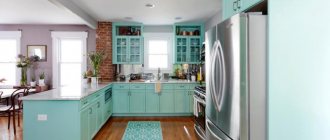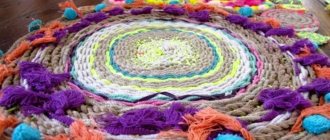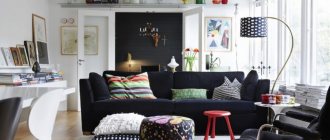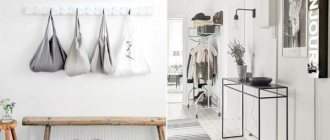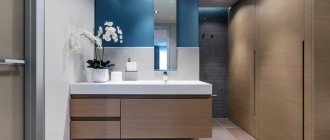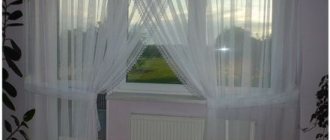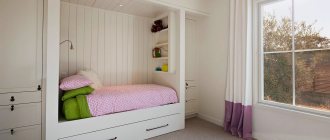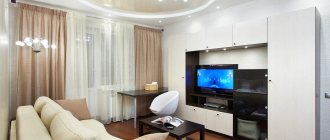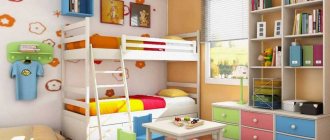What types of panels are there?
Manufacturers offer a wide range of 3D slabs, because wall panels are made from various materials that have their own advantages and disadvantages.
- Gypsum panels. Flexible and plastic gypsum allows you to create a wide variety of designs and textures, and a wall made up of several such panels seems solid, since the cracks between them can be easily covered with the same plaster. In addition, this material can be painted. The disadvantage is the significant weight of gypsum panels compared to plastic or MDF.
- Plastic panels. Considered a budget option. In addition, they are moisture resistant and lighter. Wall panels made of plastic can be painted, and their installation is quite simple: they are attached to the wall using glue or a metal frame. The downside is their flammability, which makes it impossible to use 3D panels for walls in the living room interior directly next to the fireplace.
- MDF panels. Made from wood fibers using the gluing method. The material is environmentally friendly and reliable, but much cheaper than wood. It features high performance characteristics and reliability. Used for decorating rooms with humidity not exceeding 80%. Relief panels made of compressed wood fibers are attached to the wall using brackets. The advantages include high noise and heat insulation. MDF wall panels can be painted and laminated. Among the minuses, we highlight the need for careful care of them, since over time it somewhat loses its appearance.
- Bamboo panels. Natural wood materials are also popular. Bamboo is most often used for the manufacture of volumetric decorative slabs. Low cost, environmental friendliness, ease of installation and excellent appearance open up many opportunities to use bamboo 3D panels in the interior. However, unfortunately, such panels are short-lived and have low moisture resistance, so they are not very suitable for the bathroom or kitchen. They are usually used in bedrooms or living rooms.
- Aluminum panels. A three-dimensional image on the surface of aluminum plates is obtained by perforation, and the top is covered with a special film that serves to protect the panel from corrosion. Therefore, aluminum wall panels are quite moisture resistant. In addition, they are fire-resistant and very durable. Therefore, it is permissible to use aluminum 3D panels for walls in the interior of a living room with a fireplace. This material does not require special care and practically does not get dirty, however, such luxury costs accordingly.
Room interior with 3D panel
Room interior with 3D panel
Squares in 3D panels
To make it easier to decide on the choice of panel material for your interior, here is a comparison table:
| Gypsum | Plastic | MDF | Bamboo | Aluminum | |
| Ease | — | + | + | + | + |
| Moisture resistance | — | + | + | — | + |
| Fire resistance | + | — | — | — | + |
| Durability | + | + | — | — | + |
| Price | Depends on the complexity of the drawing | Average | Average | Low | High |
| Installation | Self-tapping screws | Glue or metal frame | Brackets | Glue | Special profiles |
Living room interior with 3D panel
Living room with 3D panel
Bedroom with 3D panel
Features of 3D panels for walls
The origins of 3D walls go back to the Ancient world, when bas-reliefs were carved out of natural materials. Simply put, this is an ordinary volumetric mosaic. There are a lot of manufacturing options, starting from the material and ending with the technology of applying the pattern.
The drawing that is applied by the designer’s hand is of great importance. If the design is chosen vertically, it will visually elongate the wall, and horizontally, on the contrary, it will hide the hills.
Horizontal and vertical 3D panels
Often, recently, consumers choose this type of 3D panel for walls in the interior as a mosaic panel. It fits into any room, evens out corners and can be made from any material.
The photo shows mosaic 3D panels
But before all this beauty falls into the hands of the end consumer, 3D panels undergo a complex manufacturing process. Stages of material production:
- Development and construction of a 3D model on a computer;
- Production of panels, application of a three-dimensional structure to the surface;
- Decor of the panel itself.
At the first stage, the designer uses a computer program to simulate the selected panel. Its dimensions are taken into account here. Next, the panel itself is made and a three-dimensional image is applied to it. 3D panels are usually decorated manually.
Pros of 3d panels
- Versatility. The possibilities for using relief panels are almost limitless. They are used for decoration or as partitions when zoning rooms. Thanks to volumetric slabs, you can hide imperfections and unevenness of walls, hide insulation or various communications.
- Originality. Decorative wall panels can create a bold design and unique appearance of the room. The use of such finishing materials began relatively recently, so not everyone has yet had time to appreciate their advantages, and 3D panels for walls in the interior of an apartment will be a rather unusual solution that will definitely surprise your guests.
- Durability. Most wall panels are made from high quality materials.
- They are usually moisture-resistant, durable and resistant to mechanical stress, which guarantees a long service life of the panels.
- Easy to install. Installation of the panels does not require additional preparation, as well as special tools or skills. To install the slab, you do not need to bring the wall to perfect condition, because installation can be done even on uneven surfaces. You can decorate the walls of a room with decorative slabs without involving professionals using glue or liquid nails.
- Heat and sound insulation. Three-dimensional patterns on panels made of various materials serve for decoration, but can also play the role of insulation or soundproofing partition.
Wavy 3D panel in the interior of a room
Room interior with 3D panel
Large room with a beautiful 3D panel
3D PVC Wall Panels
Decorative panels made of polymers do not lose their positions. The advantages lie in unlimited design possibilities, since it is easy to create a relief of any complexity from PVC at a relatively low cost, which makes these elements attractive to any buyer.
PVC products are considered environmentally friendly, as they do not emit harmful compounds, including when heated. They are resistant to chemical and mechanical influences. They are durable and easy to care for.
There is an assortment of tiles of different colors and relief patterns. They are suitable for creating any interior style, from classic to constructivist.
Most often, such panels are used to decorate walls in the bathroom.
Cons of 3d panels
- Difficulty of perception. It is recommended to place relief panels on only one wall or part of it. Otherwise, they can overload the interior and also tire a person.
- The need for regular cleaning. A three-dimensional pattern on the walls will accumulate dust and, therefore, require constant cleaning. When installing 3D panels in a room, you need to be completely sure that you can provide them with such care. Otherwise, the accumulated dust will not only spoil the effect of the three-dimensional image, but can also cause allergies.
- Stylistic features. Relief panels are a rather complex effect that requires maintaining the stylistic unity of the room. In many interiors, such a solution will look too pretentious or inappropriate.
- Difficult to replace. If one panel fails, it will be quite difficult to find a replacement, so it is better to stock up on several extra panels in advance.
Unusual 3D panel in the interior of a room
Room design with 3D panel
Light 3D panel in the interior of the room
Decorating 3D walls in a room
MDF panels, despite their low price, perfectly imitate expensive finishing materials. They are attached to smooth walls with special glue, which makes the process easier. In this case, there is practically no construction waste.
What should the surface be?
Clean the walls from dirt and dust. Apply a deep penetration primer in two layers. Treat the back of the slabs with the same substance. If there are large differences or unevenness, level the surface of the wall.
Mounting methods
There are two fixation methods. They are used depending on the capabilities and the desired result:
- on mounting plates that are attached to the back of the panel;
- onto mounting braces, which themselves are directly fixed to the panel, and their reverse part is fixed to the wall.
Using the second option, a panel effect is obtained.
Finishing with regular and light panels
Light panels are used as a local source and as general illumination of the room.
Thanks to them, decorative and additional lighting is provided. They have a matte, perfectly diffused glow, which makes the room visually larger and the ceiling higher. Lighting devices are installed not only on the wall, but also in columns, cornices or partitions.
By correctly distributing the device, important parts of the room are highlighted and divided into zones.
Elongated, round panels are used to emphasize the purpose of the room and distribute accents on certain objects.
Application options
Three-dimensional technologies are actively being introduced into interior design, striking the imagination with unusual shapes and transforming space. Volumetric panels serve to perform aesthetic and functional tasks. They are actively used for zoning rooms, creating partitions, masking communications or uneven walls.
Relief images with a volume effect can visually increase the size of the living room and give the interior freshness and novelty. A horizontally placed pattern will visually elongate and expand the room, while vertical stripes will raise the ceiling level.
Decorative wall panels are also used as heat and sound insulation or highlighting functional areas. They will create a wonderful backdrop for a home theater, and made of fireproof materials - even for a fireplace.
Soft 3D panel in the interior of the room
Beautiful 3D panel in the interior of the room
Living room design with 3D panel
Advantages and disadvantages of 3D wallpaper
The material allows you to completely transform the room. The advantages of 3D wallpaper include the following: good wear resistance, long service life, ease of maintenance.
3D photo wallpapers for walls are expensive. They are suitable for spacious apartments. If the painting is accidentally damaged, the entire image will have to be replaced.
Where to use
The modern range of 3D panels allows you to match them to any style. Three-dimensional images made of plaster will fit perfectly into a classic interior, which will harmonize perfectly with elements such as columns and stucco molding. Modern apartments in a minimalist style involve the use of metal or glass, while in ethnic interiors natural wood is preferable.
To emphasize the three-dimensional effect, lighting with spotlights or LED strips is used.
Practical and convenient 3D panels are gaining more and more popularity and are used in almost any room: living rooms, bedrooms, kitchens, bathrooms and children's rooms. Moreover, the scope of their application depends on the material from which they are made. Natural wood panels, as well as gypsum decorative boards, are usually not placed in rooms with high humidity, and aluminum panels are used to decorate bathrooms and kitchens. The most environmentally friendly bamboo and other types of wood are used in bedrooms, children's rooms and living rooms, and universal three-dimensional images made of plastic are suitable for any interior.
Cladding fireplace niches with volumetric panels made of non-combustible materials is very popular, and in bedrooms 3D panels are usually installed on the wall behind the bed, achieving the effect of a three-dimensional volume of the room.
Bedroom interior with 3D panel
Wavy yellow 3D panel in the interior of the room
White 3D panel in the interior of the room
Laying 3D panels for walls
Before installing the panel, you must carefully calculate the amount of materials that will be needed. The complexity of installation will depend on the complexity of the chosen design.
Installation steps:
- Measurement of walls;
- Surface treatment with primer;
- The frame is installed using metal beams and screws. These supplies can be purchased at any hardware store. It is very easy to calculate their number. It is enough to know the surface area of the room. Also, we must not forget to leave gaps between the wall and the structure. They may be needed for laying electrical cables;
- 3D panels can be attached using glue or special screws. It all depends on the material from which the panels are made. It is better to fasten with screws, since if one of the structural elements is accidentally damaged, it will be enough to replace only it.
The panels are attached to each other using grooves. This design is suitable for uneven walls. If the panel is glued to the wall, then the surface should be perfectly smooth. To work, you will need liquid nails and a spatula. An adhesive is applied to each panel and it is applied to the surface;
- Painting.
Measuring the walls is necessary to determine the amount of consumables. It must be done vertically and horizontally using a building level. The wall must be primed and degreased if adhesive fastening is planned.
It is recommended to paint the panels with a spray gun or a regular roller. The last thing you can do is create a convex pattern. It is recommended to choose acrylic paints from well-known manufacturers.
If you wish, you can even apply a photo to a 3D wall panel . You can carry out installation either independently or with the help of a specialist. For example, bamboo 3D wall panels are very easy to install yourself.
Installation methods
The ease of installation of wall panels is one of their main advantages. Even a novice who has never done repairs can do such simple work.
Installation of 3D panels does not require any preliminary preparation of the walls. You just need to choose a location. The ideal option is to glue the panels with glue or liquid nails, however, this solution is only appropriate on almost flat walls with acceptable small defects. If the surface is not ideal, then it is better to use metal lathing to install the panels.
Room interior with 3D panel
Wavy 3D panel in the interior of a room
Room interior with 3D panel
White 3D panel in the room
It is recommended to think in advance about how the drawing will be positioned. To do this, first estimate on a horizontal surface what it will look like.
If installation is done on your own, then give preference to decorative panels that have special grooves for fasteners, this way you will achieve tighter joints.
Please note the panels are made to order. With their help, you can create a truly unique design that suits your interior in all respects.
Selection of decorative 3D coating
The theme of three-dimensionality itself, if we talk about it in a broader sense than its use in decoration, has a broad meaning, because it is part of a trend. It is a fact that nowadays multi-dimensional spatial forms are becoming more common and appreciated in various fields of art. In the case of interior and exterior decoration, the 3D theme has effectively entered into houses and apartments and has become a sign of quality and modernity, present in everyday life, not just in art.
Of course, the choice of material for decorative coating is wide and varied. One thing is for sure - your choice, as well as the interior, will be able to reflect your character. And the existing offers of 3D panels on the modern construction market will undoubtedly allow you to do this.
Tags
3 d panels for walls 3D panels 3d panels 3 d panels
Fluorescent wallpaper
Luminous products have a special paint on the surface. It accumulates the energy of the sun during the day and releases it at night. Paints can be applied in different colors to create a beautiful painting.
The dimensions of 3D photo wallpaper on the wall depend on the wishes of the consumer. Fluorescent backlit products depicting cities, landscapes, and space look impressive.
